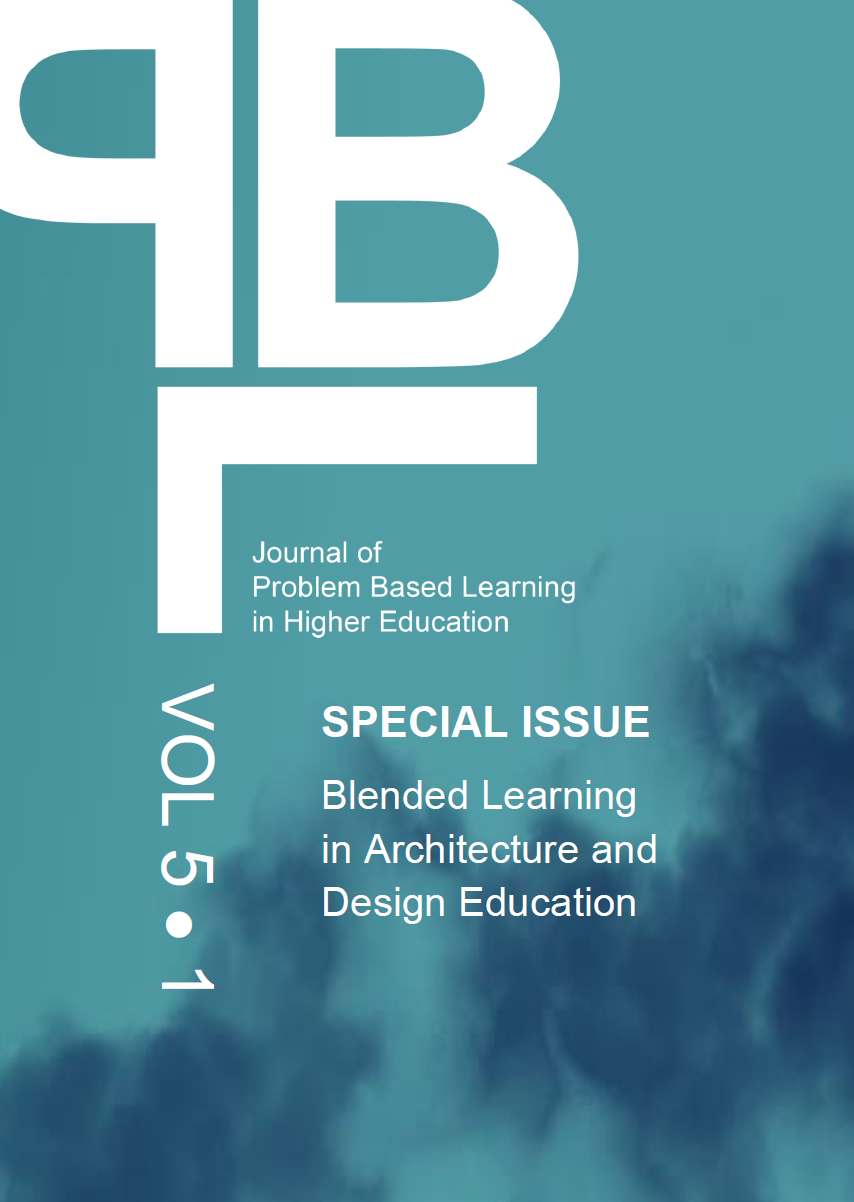Abstract
“Virtual reality” adds a new dimension to constructivist problem-based learning (PBL) environments in the architectural and building construction educations, where a realistic and lifelike presence in a building enables students to assess and discuss how the various solutions interact with each other. Combined with “Building Information Models” (BIM), “Virtual Reality” provides an entirely new opportunity to innovate and optimize the architecture and construction in its early stages, which creates and iterative learning process. There are several studies where virtual simulation tools based on predefined tutorials are tested for their ability to facilitate collaborative processes. This study addresses the problem from a new angle by the virtual universe created through the students' own iterative design of a building. The “Virtual reality” system's narrative tale arises spontaneously through the dialogue. The result of this study shows that “Virtual Reality”, as a tool, creates some changes in the dialogue conditions which affect the learning process. The use of “Virtual Reality” requires a very precise framing about the system's ability to facilitate a collaborative learning process. The analysis identifies several clear opportunities about incorporating gamification mechanisms known from e.g. video games software.
References
Amiel, et.al (2008). Designbased research and Educational Technology:Rethinking Technology and theResearch Agen-da.Educational Technology & Society, 11
Akker, Gravemeijer, McKenney & Nieveen (Eds.), Educational Design Research. London & New York: Routledge.
Barab, et.al (2004) Design-Based Research: Putting a Stake in the Ground, The journal of the learning sciences, 13(1), 1-14, Lawrence Erlbaum Associates, Inc.
Coob, P. et.al (2003): ‘Design Experiments in Educational Research’, In: Educational Researcher, Vol. 32 No 1 pp 1-13
Deterding Sebastian, gamification: designing for motivation, 2012, association for computer machinery
Egges, Papagiannakis, Thalmann, 2007, presence and interaction in mixed reality environments. Visual comput (2007) 23: 317-333
Erenli, Kai, The impact of gamification - recommending education scenarios, 2013, University of Vienna, Austria
Gee, James Paul. 2003. What Video Games Have to Teach Us about Learning and Literacy. New York: Palgrave Macmillan
Gravemeijer, K. et.al (2006) Design Research from a learning design perspec-tive. In J. V. D. Akker, K. Gravemeijer, S. McKenney & N. Nieveen (Eds.), Educational Design Re-search.London & New York: Routledge.
Hou, Huei-Tse, 2012, Exploring the behavioural patterns of learners in an educational massively multiple online role-playing game (MMORPG). Computers and education 58 (2012) 1225-1233
Johansson, Verhagen, Åkerfeldt, Selander, 2013? How to deisgn for meaningful learning – finding the balance between learning and game components. System science, Stockholm University, Sweden.
Kaptelinin, Kuutti, Bannon, activity theory: Basic concepts and application, a summary of a tutorial given at the East West HCI 95 conference
Kaptelinin, Nardi, Activity Theory in HCI, fundamentals and reflections, 2012, Morgan & Calypool
Kaptelinin, Nardi, Macaulay, 1999, The activity Checklist: a tool for represending the “space” of context
Knudstrup, M. A. (2004). Integrated design process in problem-based learning. In Aalborg Pbl Model: Progress, Diversity and Challenges. Aalborg Universitetsforlag.
Kress, Selander, 2011, Multimodal design, learning and cultures of recognition. Stockholm University, department of education, SE-10691 Stockholm, Sweden
Lave, J., & Wenger, E. (1991). Situated learning: Legitimate peripheral participation. Cambridge university press.
McDonald, Le, Higgins, Podmore, 2005,Artifacts, tools, and classrooms; Mind, culture and activity, 12(2), 113-127, University of California, laboratory of comparative human cognition.
McGonigal, Jane, Reality Is Broken: Why Games Make us Better and How they Can Change the World, 2012
McKenney, S. & Nieveen, N. & Akker, J. v. d; Design Research from a Curriculum perspective. In J. V. D, 2006
Morris, Croker, Zimmerman, Gill, Romig, 2013, gaming science - the gamification of scientific thinking. Frontiers in Psychology
Nieveen, N McKenney, & Akker, Educational Design Research: The value of variety, 2006
Renaud, Wagoner, 2011, The gamification of learning, National association of secondary school principals.
Riva, Mantovani, 2000, The need for a socio-cultural perspective in the implementation of virtual environments, Springer London, virtual reality (2000) 5:32-38
Riva, Giuseppe, 2009, Is presence a technology issue? Some insights from cognitive sciences, Virtual reality (2009) 13: 159-169
Rodrigues, Bidarra, 2014, transmedia storytelling and the cration of a converging space of educational practices. University of Lisbon, Portugal. http://dx.doi.org/10.3991/ijet.v9i6.4134
Qu, Brinkman, Ling, Wiggers, Heynderickx, 2014, Conversations with a virtual human: Synthetic emotions and human responses. Computer in human behaviour 34 (2014) 58-68
Selander, Staffan, 2008, Designs for learning – a theoretical perspective, Stockholm University, Sweden, design for learning, volume 1, number 7
Selander, Staffan, 2007; Designs of learning and the formation and transformation of knowledge in an era of globalization. Springer science+business media B.V 2007
Said, Thair, Ali, Noor, Abdullah, 2014, Using activity theory as analytical framework for avaluating contextual online collaborative learning, university teknologi Malaysia.
Shön, Donald; den reflekterende praktikere
Suznjevic, Matijasevic, 2010, Why MMORPG players do what they do: relating motivations to action categories. Int J of advanced media and communication.
Theoktisto, Fairén, 2005, Enhancing collaboration in virtual reality application. Computer and Graphics 29 (2005)704-718, Barcelona
The design-based Research Collective. (2003). Design-Based Research: An Emerging paradigm for Educational Inquiry. Educational Researcher, 32(1)
The NMC Horizon Report: 2012 Higher Education Edition, Citation. Johnson, L., Adams, S., and Cummins, M. Austin, Texas: The New Media Consortium.
Undervisningsministeriet, 2001. Uddannelse, læring og demokratisering.
Wang, F., & Hannafin, M.; Design-based research and tech-nology –enhanced learning environments. Educational Tech-nology, Research and Development, 2005
Wenger, E. (1999). Communities of practice: Learning, meaning, and identity. Cambridge university press.
Widjaja, Balbo, 2005, structuration of activity: a view on human activity, university of Melbourne
Wilson, D´cruz, 2006, Virtual and interactive environments for work of the future. Int J. Human-computer studies 64 (2006) 158-169, University of Nottingham
Yeh, Yu-chu, 2010, Integrating collaborative PBL with blended learning to explore preservice teachers development of online learning communities. Teaching ang teacher education 26 (2010) 1630-1640
Articles published in Journal of Problem Based Learning in Higher Education are following the license Creative Commons Attribution 4.0 (CC-BY)
Authors retain copyright and grant the journal right of first publication with the work simultaneously licensed under a Creative Commons Attribution 4.0 International License (CC-BY). Further information about Creative Commons
